The Art of Floral Arrangement: Tips and Techniques
Creating stunning floral arrangements is more than just putting flowers together; it’s an art form that combines creativity, technique, and an understanding of nature’s beauty. Whether you’re preparing for a wedding, a dinner party, or simply want to brighten up your home, mastering the art of floral arrangement can transform ordinary blooms into extraordinary displays. In this article, we will explore essential tips and techniques that will empower you to create breathtaking arrangements that not only catch the eye but also evoke emotion.
Floral design principles are the backbone of creating visually appealing arrangements. Understanding these principles is like knowing the rules of a game before you play; it sets the foundation for your creativity. Key principles include:
- Balance: This refers to the visual weight of the arrangement. A balanced arrangement feels stable and pleasing to the eye.
- Contrast: Using different colors, shapes, and sizes can create interest and excitement in your design.
- Harmony: This principle ensures that all elements of the arrangement work together cohesively.
- Proportion: This involves the size relationship between flowers and the overall arrangement, ensuring that no single element overwhelms the others.
By mastering these principles, you can effectively combine flowers to create arrangements that are not just beautiful but also harmonious.
Selecting the appropriate flowers for your arrangement is crucial to its success. Consider factors such as seasonality, color palettes, and the types of flowers you want to use. Choosing flowers that are in season not only enhances the freshness of your arrangement but also supports local growers. Additionally, think about the mood you want to convey. For instance, vibrant colors can create a lively atmosphere, while soft pastels can evoke a sense of calm.
Using seasonal flowers can significantly enhance the vibrancy and longevity of your arrangements. When you select flowers that are in season, you're not only ensuring they are at their freshest, but you're also making a sustainable choice. For example, spring brings tulips and daffodils, while summer offers sunflowers and peonies. Here’s a quick guide to seasonal flowers:
| Season | Flowers |
|---|---|
| Spring | Tulips, Daffodils, Lilacs |
| Summer | Sunflowers, Peonies, Roses |
| Fall | Chrysanthemums, Dahlias, Asters |
| Winter | Poinsettias, Amaryllis, Holly |
When it comes to choosing flowers, you often face the decision between local and imported options. Local flowers tend to be fresher, support your community, and have a smaller carbon footprint. On the other hand, imported flowers offer a wider variety, especially if you're seeking exotic blooms. Here are some pros and cons to consider:
- Local Flowers: Fresher, supports local economies, and environmentally friendly.
- Imported Flowers: Greater variety, availability of rare species, but can be less fresh and more expensive.
Understanding color theory is essential for creating visually appealing arrangements. Colors can evoke emotions and set the tone of your design. For instance, complementary colors (colors opposite each other on the color wheel, like blue and orange) create a vibrant contrast, while analogous colors (colors next to each other, like blue, blue-green, and green) create a more serene and harmonious look. By experimenting with different color combinations, you can enhance the overall aesthetic of your arrangements.
Proper care and preparation of flowers are vital for ensuring their longevity. Here are some essential tips to keep your flowers fresh:
- Cut stems at an angle to allow for better water absorption.
- Remove any leaves that will be submerged in water to prevent bacterial growth.
- Use a clean vase and fresh water, adding flower food if available.
- Store arrangements in a cool location away from direct sunlight.
By following these simple care tips, you can ensure that your flowers remain vibrant and beautiful for as long as possible.
Mastering various arrangement techniques can elevate your floral designs to new heights. Different styles can serve different purposes, whether it’s a bouquet for a loved one or an elegant centerpiece for a wedding. Let’s dive into some popular techniques.
A balanced bouquet is not only visually pleasing but also structurally sound. To achieve this, start by selecting a variety of flowers in different sizes and shapes. Begin with your focal flowers—these are the stars of your bouquet. Then, add filler flowers to create depth, followed by greenery to give your arrangement a natural look. The key is to keep stepping back and assessing your arrangement from different angles to ensure balance and harmony.
Centerpieces are the focal points of any event, and designing striking ones can enhance the overall theme of your gathering. Consider the height and scale of your centerpiece; it should be proportionate to the table size and not obstruct guests' views. Use a mix of flowers, textures, and colors that match your event’s palette. Don’t forget to incorporate unique elements like candles or decorative stones to add interest and depth.
Q: How do I keep my flowers fresh longer?
A: Make sure to cut the stems at an angle, remove leaves that touch the water, and use fresh water with flower food.
Q: What are the best flowers for beginners?
A: Sunflowers, daisies, and roses are great choices for beginners due to their hardiness and availability.
Q: Can I mix different types of flowers in one arrangement?
A: Absolutely! Mixing different types of flowers can create a beautiful and dynamic arrangement. Just be mindful of color and size balance.
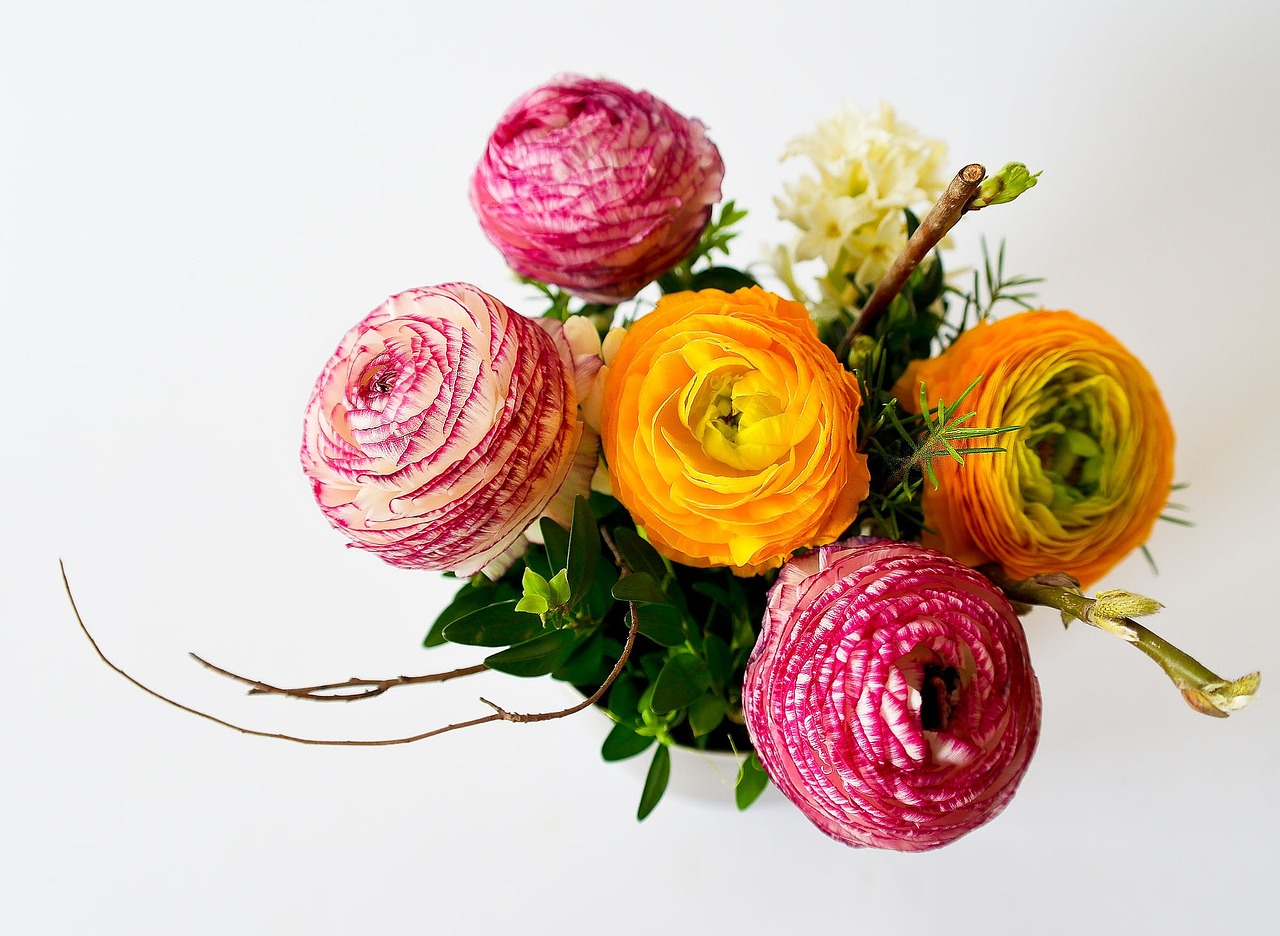
Understanding Floral Design Principles
Floral design principles are the backbone of creating captivating arrangements that not only catch the eye but also evoke emotions. Think of these principles as the rules of a game; when you understand and apply them correctly, your floral creations will flourish. Let's dive into some of the essential principles that will guide you on your journey to becoming a floral artist.
Balance is one of the most crucial aspects of floral design. It refers to the visual weight of an arrangement. Imagine a seesaw; if one side is heavier, it tips over, right? In floral arrangements, balance can be achieved through symmetry or asymmetry. Symmetrical arrangements create a sense of order and formality, while asymmetrical designs offer a more relaxed and dynamic feel. When arranging flowers, consider the placement and size of each bloom to achieve a harmonious balance.
Contrast plays a vital role in making your arrangements pop. It involves using differing elements, such as colors, shapes, and textures, to create visual interest. For instance, pairing soft, delicate petals with bold, spiky foliage can create a striking effect. By introducing contrasting elements, you can guide the viewer's eye and highlight specific features of your arrangement.
Next, we have harmony, which is all about creating a cohesive look. This principle ensures that all components of your arrangement work together seamlessly. Think of harmony as the melody in a song; each flower, color, and texture should contribute to the overall tune. To achieve harmony, consider using a limited color palette or similar flower types that complement each other beautifully.
Lastly, let's talk about proportion. This principle refers to the size relationship between different elements within your arrangement. Imagine a giant sunflower next to a tiny daisy; the difference in size can be jarring. Instead, aim for a proportionate mix of flowers and foliage that creates a pleasing visual flow. A good rule of thumb is to use larger flowers as focal points and smaller blooms to fill in gaps, creating a well-rounded look.
To summarize, understanding these floral design principles—balance, contrast, harmony, and proportion—will empower you to create stunning arrangements that captivate and inspire. The beauty of floral design lies in its creativity, so don’t hesitate to experiment! Remember, the more you practice, the more intuitive these principles will become, allowing your unique style to shine through.
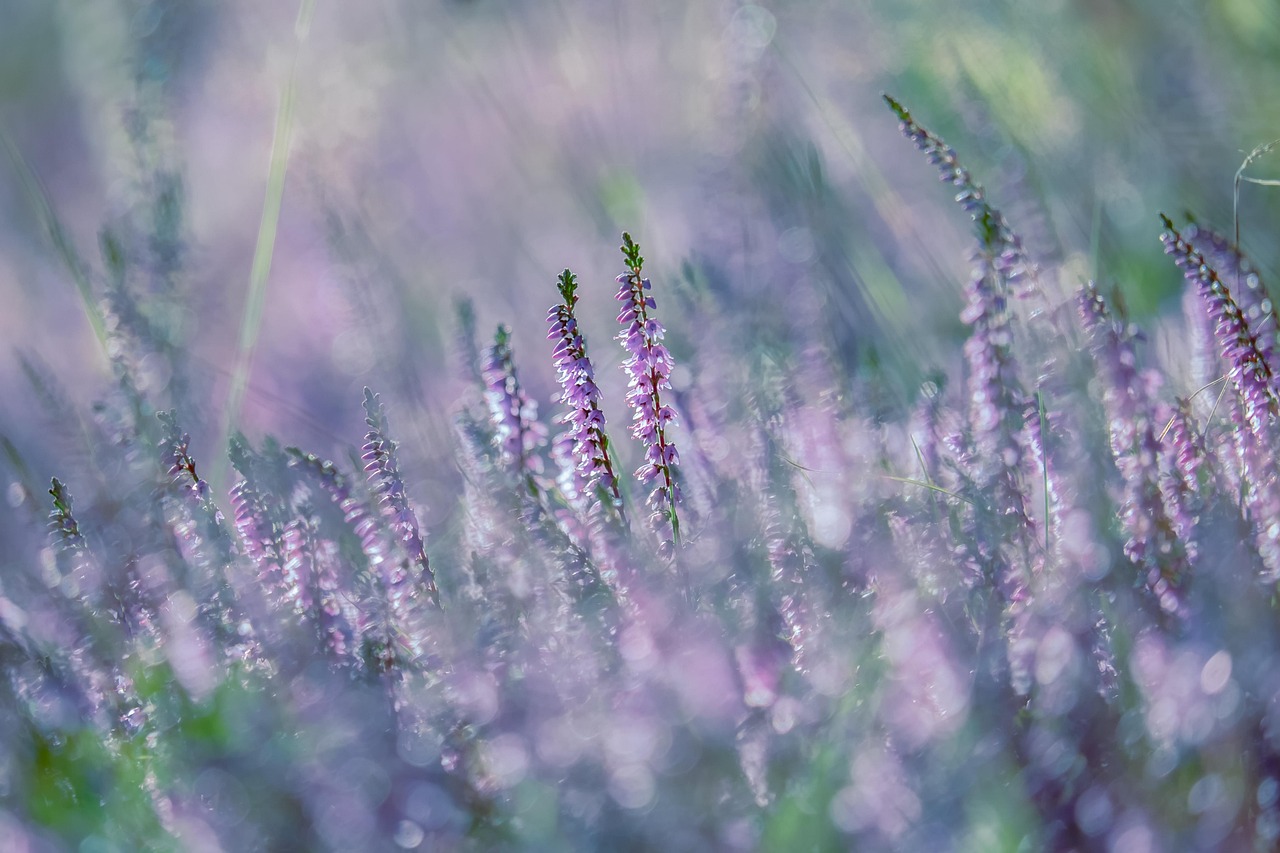
Choosing the Right Flowers
When it comes to floral arrangements, is like picking the perfect ingredients for a delicious recipe. Each flower has its own personality, and the right combination can create a stunning visual feast. But how do you know which flowers to select? There are several factors to consider, including seasonality, color palettes, and flower types. Understanding these elements will empower you to create arrangements that are not only beautiful but also meaningful and appropriate for the occasion.
First off, let’s talk about seasonality. Just like fresh produce, flowers have their peak seasons. Using seasonal flowers not only enhances the vibrancy of your arrangements but also ensures that you’re working with blooms that are at their freshest. For instance, spring brings a delightful array of tulips and daffodils, while summer showcases sunflowers and dahlias. By aligning your selections with the seasons, you can create arrangements that are bursting with life and color.
Next, consider the color palette. The colors you choose can dramatically impact the mood and tone of your arrangement. Are you aiming for a romantic vibe with soft pastels, or a bold statement with vibrant hues? Understanding color theory can help you make informed decisions. You might want to use complementary colors, which are opposite each other on the color wheel, or analogous colors, which sit next to each other. This will create a harmonious look that draws the eye and evokes emotion.
Additionally, the types of flowers you choose play a critical role in your arrangement. Each flower has its own unique shape, texture, and fragrance, contributing to the overall impact of your design. For example, combining delicate peonies with sturdy roses can create a beautiful contrast in both texture and form. When selecting flowers, think about how they will work together. Will they complement each other, or will they compete for attention? A well-thought-out combination can elevate your arrangement from ordinary to extraordinary.
To further illustrate the importance of these factors, let’s take a look at a simple table comparing seasonal flowers and their ideal uses:
| Season | Flowers | Ideal Uses |
|---|---|---|
| Spring | Tulips, Daffodils, Lilacs | Weddings, Easter, Spring Celebrations |
| Summer | Sunflowers, Dahlias, Zinnias | Birthdays, Outdoor Gatherings, Picnics |
| Fall | Chrysanthemums, Asters, Marigolds | Thanksgiving, Autumn Festivals, Harvest Events |
| Winter | Poinsettias, Amaryllis, Holly | Christmas, New Year Celebrations, Winter Weddings |
In conclusion, choosing the right flowers is a blend of art and science. By considering seasonality, color palettes, and flower types, you can create arrangements that not only look stunning but also resonate with the spirit of the occasion. Remember, every flower tells a story, and your arrangement is the canvas on which you paint that narrative. So, the next time you’re preparing to create a floral masterpiece, take a moment to reflect on the choices you’re making—they can make all the difference!
Q: How do I know which flowers are in season?
A: Research local flower markets or consult with a florist to find out which flowers are currently in season in your area.
Q: Can I mix different types of flowers in one arrangement?
A: Absolutely! Mixing different types of flowers can add texture and depth to your arrangement, just make sure they complement each other.
Q: What’s the best way to care for my flowers before arranging?
A: Trim the stems at an angle, remove any leaves that will be submerged in water, and place them in clean water with flower food to keep them fresh.

Seasonal Flower Selection
When it comes to creating stunning floral arrangements, one of the most impactful decisions you can make is selecting seasonal flowers. Choosing flowers that are in season not only enhances the freshness and vibrancy of your designs but also ensures that you’re working with blooms that are at their peak beauty. Imagine walking through a garden in full bloom; the colors are more vivid, the fragrances are more intense, and the overall aesthetic is simply breathtaking. This is the magic of using seasonal flowers!
Each season brings its own unique palette of flowers, and understanding what’s available can help you craft arrangements that truly resonate with the time of year. For instance, spring is often celebrated with tulips, daffodils, and hyacinths, while summer might feature sunflowers, dahlias, and zinnias. Autumn ushers in rich hues with chrysanthemums, asters, and seasonal foliage, while winter can showcase elegant evergreens, amaryllis, and poinsettias. By aligning your floral choices with the seasons, you not only support local growers but also create arrangements that feel timely and relevant.
Here’s a quick overview of some popular seasonal flowers:
| Season | Popular Flowers |
|---|---|
| Spring | Tulips, Daffodils, Hyacinths |
| Summer | Sunflowers, Dahlias, Zinnias |
| Autumn | Chrysanthemums, Asters, Foliage |
| Winter | Evergreens, Amaryllis, Poinsettias |
Additionally, seasonal flowers tend to be more affordable than their out-of-season counterparts. When you purchase flowers that are in bloom locally, you’re not only likely to save money, but you’re also reducing the environmental impact associated with long-distance transportation. So, it’s a win-win situation! Not to mention, the vibrant colors and fragrant scents of seasonal flowers can elevate your arrangements, making them more visually striking and aromatic.
In conclusion, selecting seasonal flowers is a crucial step in floral arrangement that can significantly enhance the beauty and sustainability of your designs. Whether you're preparing for a wedding, a birthday party, or just to brighten up your home, considering the season will lead you to make choices that are not only aesthetically pleasing but also environmentally friendly. So, the next time you’re planning your floral arrangements, remember to embrace the seasons and let nature’s calendar guide your creativity!
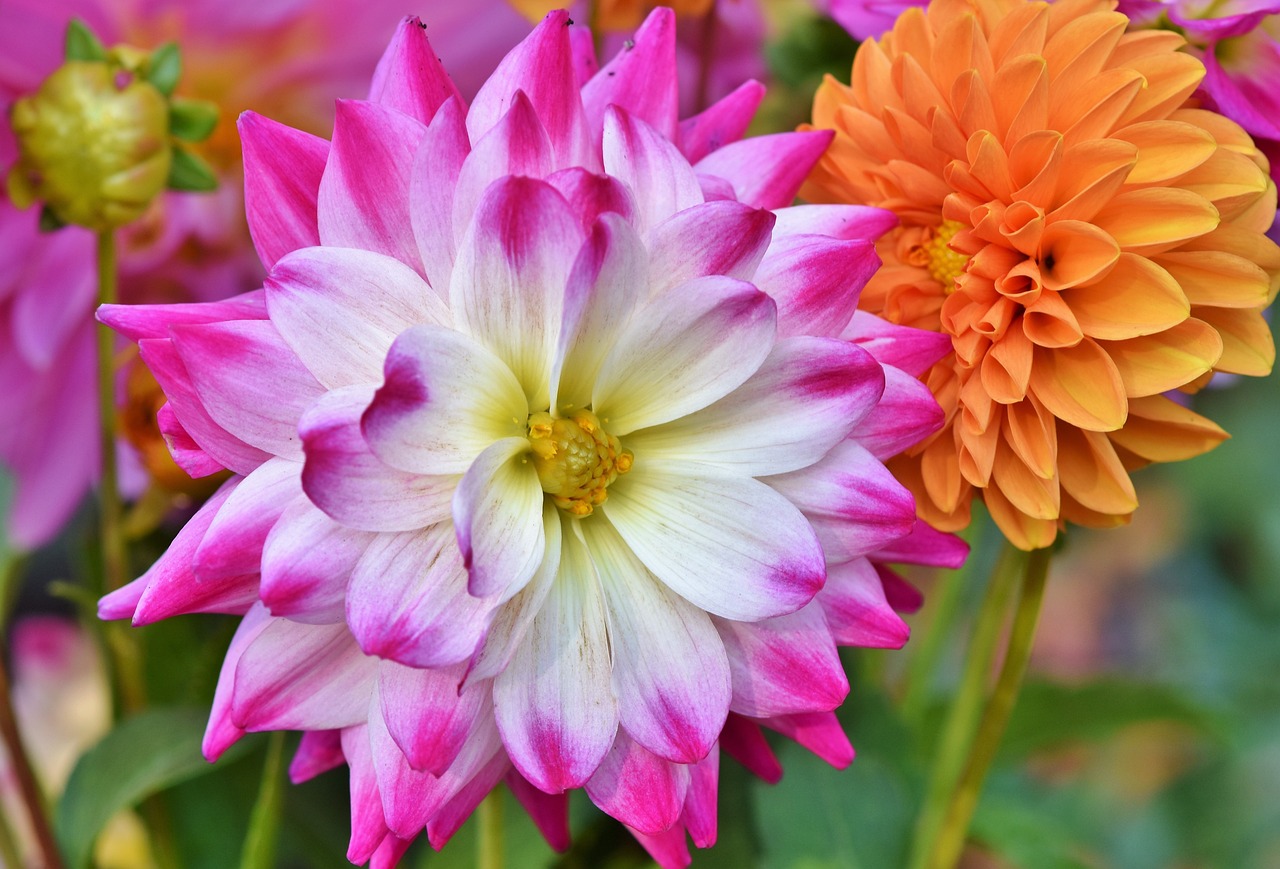
Local vs. Imported Flowers
When it comes to choosing flowers for your arrangements, one of the most significant decisions you'll face is whether to go with local or imported blooms. Each option has its own set of advantages and disadvantages, which can greatly influence not only the look of your arrangements but also their cost and sustainability. Understanding these factors can help you make a more informed choice that aligns with your values and the aesthetic you want to achieve.
Local flowers, often sourced from nearby farms or markets, are typically fresher and more vibrant. Because they don’t have to travel far, they arrive in your hands with a longer lifespan, which is crucial for maintaining their beauty in arrangements. Additionally, buying local supports your community's economy and reduces the carbon footprint associated with transportation. Imagine walking through a local farmer's market, the air filled with the sweet scent of freshly cut flowers—there’s something undeniably appealing about that!
On the other hand, imported flowers can offer a wider variety of options that might not be available in your region. For instance, if you're dreaming of a tropical-themed arrangement, you may need to look beyond local sources to find exotic blooms like orchids or birds of paradise. However, imported flowers often come with a higher price tag and may have been treated with preservatives to withstand the long journey to your local shop. These treatments can sometimes affect their natural beauty and fragrance, leaving you with a less-than-ideal arrangement.
To better understand the comparison between local and imported flowers, let’s take a look at the following table:
| Criteria | Local Flowers | Imported Flowers |
|---|---|---|
| Freshness | High | Variable |
| Variety | Limited to seasonal blooms | Wide range of options |
| Cost | Often more affordable | Usually more expensive |
| Environmental Impact | Lower carbon footprint | Higher carbon footprint |
| Support for Local Economy | Yes | No |
Ultimately, the choice between local and imported flowers comes down to your specific needs and values. If you prioritize freshness and sustainability, local flowers are the way to go. However, if you’re looking for a specific type of flower that isn’t available in your area, imported options might be necessary. Think of it like choosing between a homemade meal and a takeout order; both can be delicious, but they offer different experiences and benefits. So, what will it be for your next floral masterpiece?
- What are the benefits of using local flowers? Local flowers are fresher, support the local economy, and have a lower environmental impact.
- Are imported flowers always more expensive? Generally, yes, imported flowers tend to have a higher price due to transportation costs and the need for preservation.
- How can I find local flower suppliers? Check farmers' markets, local florists, or community-supported agriculture (CSA) programs for fresh, local blooms.
- Do imported flowers last longer? Not necessarily; while they may be treated for longevity, local flowers are often fresher and can last longer in arrangements.
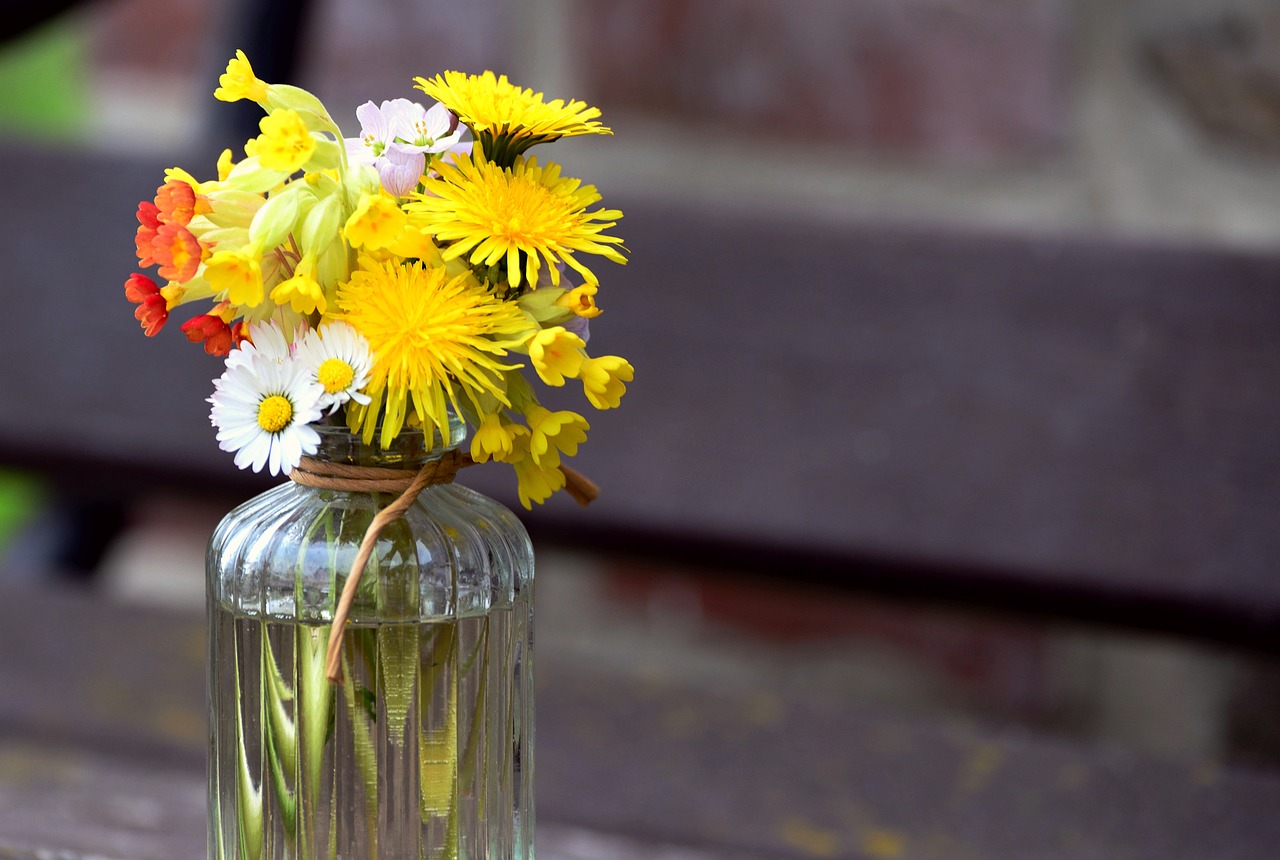
Color Theory in Floral Arrangements
Understanding color theory is essential for anyone looking to create stunning floral arrangements. Just like a painter selects colors to evoke emotions and set a mood, a floral designer must carefully choose hues to create a visual masterpiece. The right color combinations can transform a simple bouquet into a breathtaking display that captivates onlookers. So, how do we harness the power of color in our floral designs?
First, it’s important to grasp the basics of the color wheel. Colors are typically divided into three categories: primary, secondary, and tertiary. Primary colors—red, blue, and yellow—are the foundation of all other colors. By mixing these, we get secondary colors like green, orange, and purple. Tertiary colors, formed by mixing a primary and a secondary color, add even more variety to your palette. This knowledge is crucial when selecting flowers that will complement each other beautifully.
One of the most effective ways to create harmony in an arrangement is through the use of complementary colors. These are colors that are opposite each other on the color wheel, such as blue and orange or red and green. When placed together, they create a striking contrast that draws attention and adds vibrancy to your arrangement. For instance, pairing bright orange marigolds with deep blue delphiniums can create a stunning visual impact that is sure to catch the eye.
On the other hand, analogous colors—colors that are next to each other on the wheel—can create a more subtle and serene look. Think of a bouquet featuring shades of pink, red, and purple. This combination can evoke feelings of calmness and unity, making it perfect for romantic settings or peaceful environments. By understanding how to mix and match these colors, you can create arrangements that are not only visually appealing but also convey the right emotions for any occasion.
When planning your floral designs, consider the psychology of colors as well. Different colors can evoke different feelings and reactions. For example:
- Red: Passion, love, and energy
- Yellow: Happiness, warmth, and cheerfulness
- Blue: Calmness, serenity, and trust
- Purple: Luxury, creativity, and mystery
- Green: Growth, harmony, and freshness
By selecting flowers based on their color and the emotions you wish to evoke, you can create arrangements that resonate deeply with the recipient. For example, a bouquet of red roses might be perfect for a romantic gesture, while a mix of yellow daisies and green foliage could brighten someone's day and bring a smile to their face.
In conclusion, mastering color theory is a vital skill for any floral designer. By understanding the relationships between colors and how they affect emotions, you can create floral arrangements that not only look stunning but also convey the right message for any occasion. So, the next time you find yourself arranging flowers, remember to think about the colors you choose and what they communicate. Happy arranging!
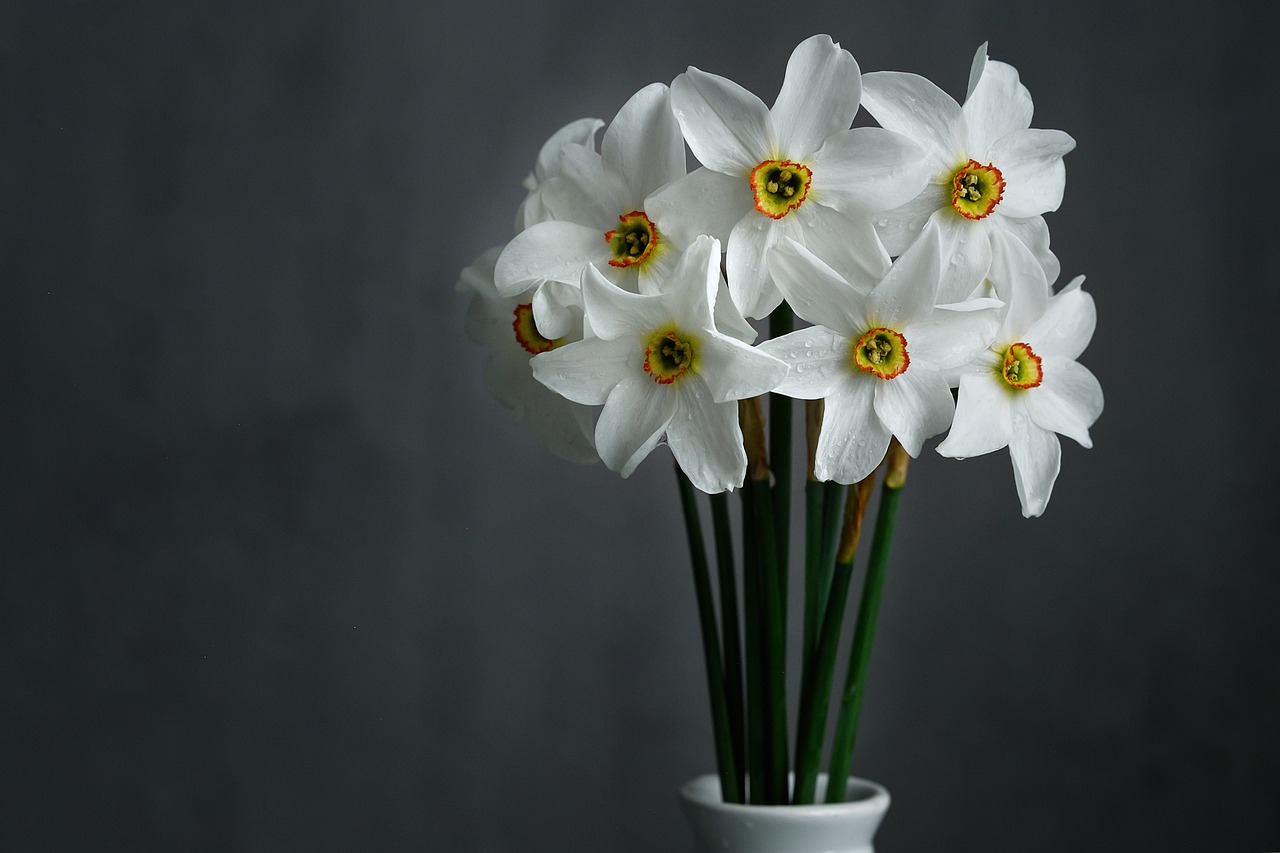
Flower Care and Preparation
When it comes to creating stunning floral arrangements, are just as crucial as selecting the perfect blooms. Think of your flowers as the stars of a show; they need the right environment and care to truly shine. The first step in this process is cutting the stems properly. Always use a sharp knife or scissors to make a clean cut at a 45-degree angle. This technique increases the surface area for water uptake, ensuring your flowers stay hydrated.
After cutting, it’s essential to condition your flowers. This means placing them in a bucket of water for a few hours before arranging them. Conditioning allows them to absorb water and nutrients, which is vital for their longevity. During this time, you can also remove any leaves that will be submerged in water to prevent bacterial growth. Speaking of bacteria, it’s a good idea to use a clean container filled with fresh, lukewarm water. This helps to keep your flowers healthy and vibrant.
Another important aspect of flower care is storing your blooms correctly. If you’re not arranging them right away, keep them in a cool place away from direct sunlight. Heat can cause flowers to wilt faster, so think of it as putting them in a spa to relax and rejuvenate before their big debut. If you have a variety of flowers, be mindful of their individual needs. Some flowers, like roses, prefer to be kept in water, while others, like tulips, can be kept in a cool, dry place for a short time.
Let’s not forget about the use of flower food, which can be a game-changer in maintaining the freshness of your arrangements. Flower food contains essential nutrients that help flowers thrive and can significantly extend their lifespan. Just mix the recommended amount in the water before placing your flowers in the vase. Here’s a quick overview of what you should do:
| Step | Action |
|---|---|
| 1 | Cut stems at a 45-degree angle |
| 2 | Condition flowers in water for a few hours |
| 3 | Remove leaves submerged in water |
| 4 | Store in a cool, shaded area |
| 5 | Add flower food to the water |
By following these simple yet effective tips, you can ensure that your flowers remain fresh and vibrant, setting the stage for a breathtaking arrangement. Remember, a little bit of care goes a long way in making your floral displays the talk of the town!
- How often should I change the water in my flower arrangement? It's best to change the water every two days to keep bacteria at bay and ensure your flowers stay hydrated.
- Can I use tap water for my flowers? Yes, but letting it sit out for a few hours can help reduce chlorine levels, which can be harmful to some flowers.
- What should I do if my flowers start to wilt? Trim the stems again and place them in fresh water. Sometimes, they just need a little extra care to perk up!
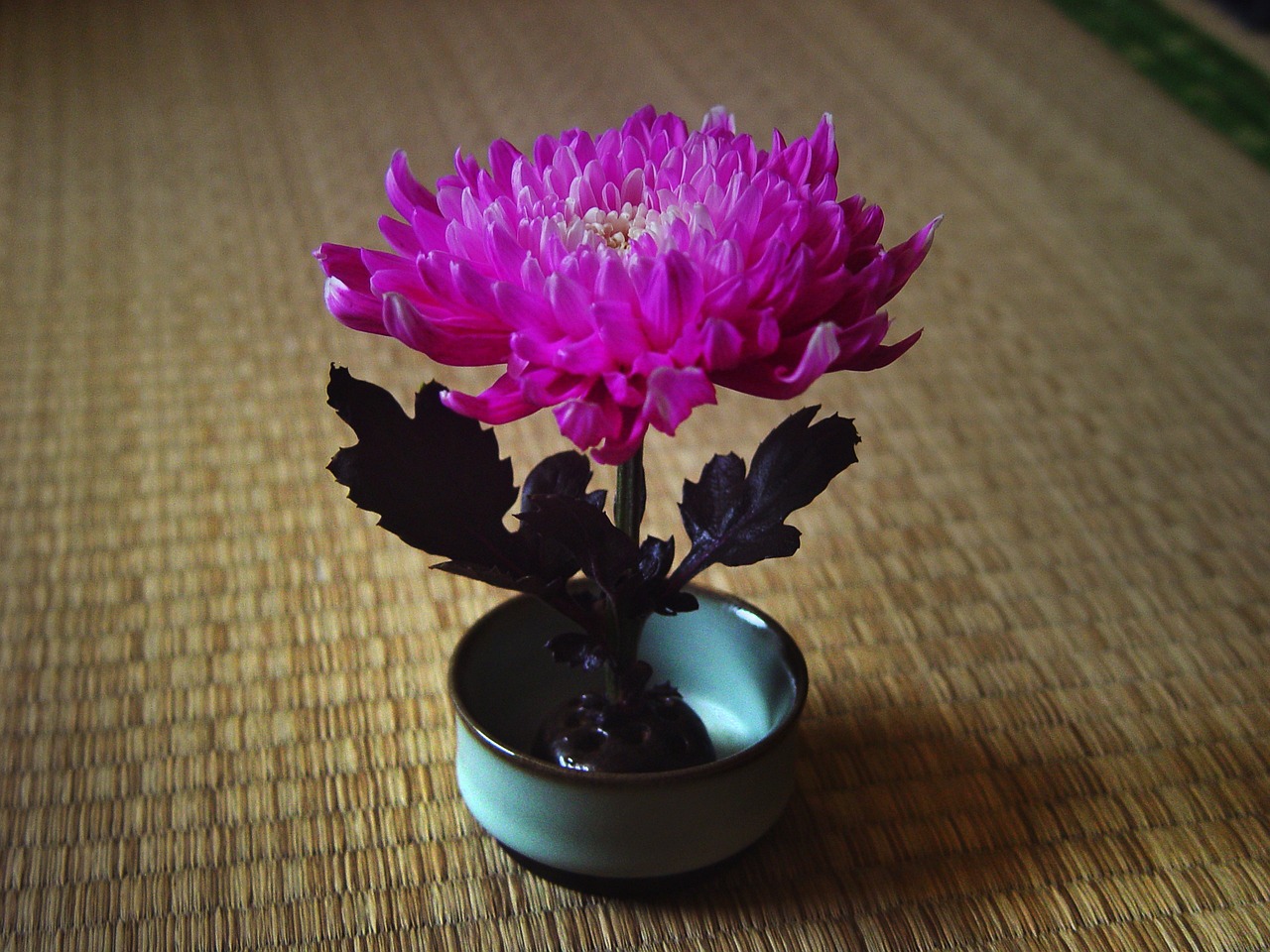
Techniques for Arrangement
When it comes to floral arrangements, mastering various techniques is essential to elevate your designs from ordinary to extraordinary. Just like a painter carefully selects their brushstrokes, a floral designer must choose their methods wisely to create stunning compositions that captivate the eye. In this section, we’ll dive into popular styles such as bouquets, centerpieces, and wreaths, offering insights on how to execute each effectively.
One of the most fundamental techniques is creating a balanced bouquet. A balanced bouquet not only looks aesthetically pleasing but also provides structural integrity. Imagine the bouquet as a well-orchestrated symphony, where each flower plays its part in harmony with the others. To achieve this, start by selecting a variety of flowers that complement each other in both color and size. For instance, pairing larger blooms with smaller filler flowers can create a sense of depth and interest.
To create a balanced bouquet, follow these step-by-step instructions:
- Choose your focal flowers: These are the stars of your bouquet. Opt for bold, eye-catching blooms like roses or peonies.
- Add secondary flowers: Include flowers that complement your focal flowers in color and size, such as daisies or tulips.
- Incorporate filler flowers: These smaller flowers, like baby’s breath, help fill in gaps and add texture.
- Arrange with greenery: Utilize leaves and stems to create a natural look and enhance the bouquet's overall fullness.
- Secure your arrangement: Use floral tape or wire to hold everything in place, ensuring stability.
Next, let’s talk about designing eye-catching centerpieces. Centerpieces are the focal points of any event, drawing attention and setting the mood for the occasion. Think of them as the cherry on top of a beautifully frosted cake. To create a striking centerpiece, consider the following:
- Height Variation: Use varying heights in your arrangement to create visual interest. Tall flowers like delphiniums can be paired with shorter blooms to achieve this effect.
- Color Coordination: Coordinate your centerpiece colors with the event's theme. For a wedding, soft pastels create a romantic vibe, while bold colors can energize a party atmosphere.
- Incorporate Unique Containers: Think outside the box! Instead of traditional vases, consider using vintage teapots, mason jars, or even wooden boxes for a rustic touch.
Finally, wreaths are another delightful technique worth exploring. Wreaths can be used for various occasions, from seasonal celebrations to home decor. They serve as a warm welcome, much like an inviting hug at your front door. Creating a floral wreath involves a few key steps:
Begin by selecting a sturdy base, such as a wire frame or a grapevine wreath. Then, gather your choice of flowers and greenery, ensuring they are fresh and vibrant. Start attaching your flowers, working from the outer edge to the center, layering them for depth. Don’t forget to incorporate seasonal elements, like pinecones in winter or dried leaves in autumn, to enhance the wreath's charm.
As you experiment with these techniques, remember that practice makes perfect. The more you play with different styles and arrangements, the more confident you will become in your floral design skills. So grab your scissors, choose your flowers, and let your creativity bloom!
Q: How can I make my floral arrangements last longer?
A: To extend the lifespan of your arrangements, make sure to cut the stems at an angle, remove any leaves that will sit in water, and change the water every few days.
Q: What flowers are best for beginners?
A: Beginners should start with hardy flowers like chrysanthemums, carnations, and daisies, as they are easy to work with and forgiving.
Q: How do I choose a color palette for my arrangement?
A: Consider using the color wheel! Choose complementary colors for a bold look or analogous colors for a more harmonious feel.
Q: Can I use artificial flowers for arrangements?
A: Absolutely! Artificial flowers can be a great alternative, especially for long-lasting displays. Just ensure they look realistic for the best effect.
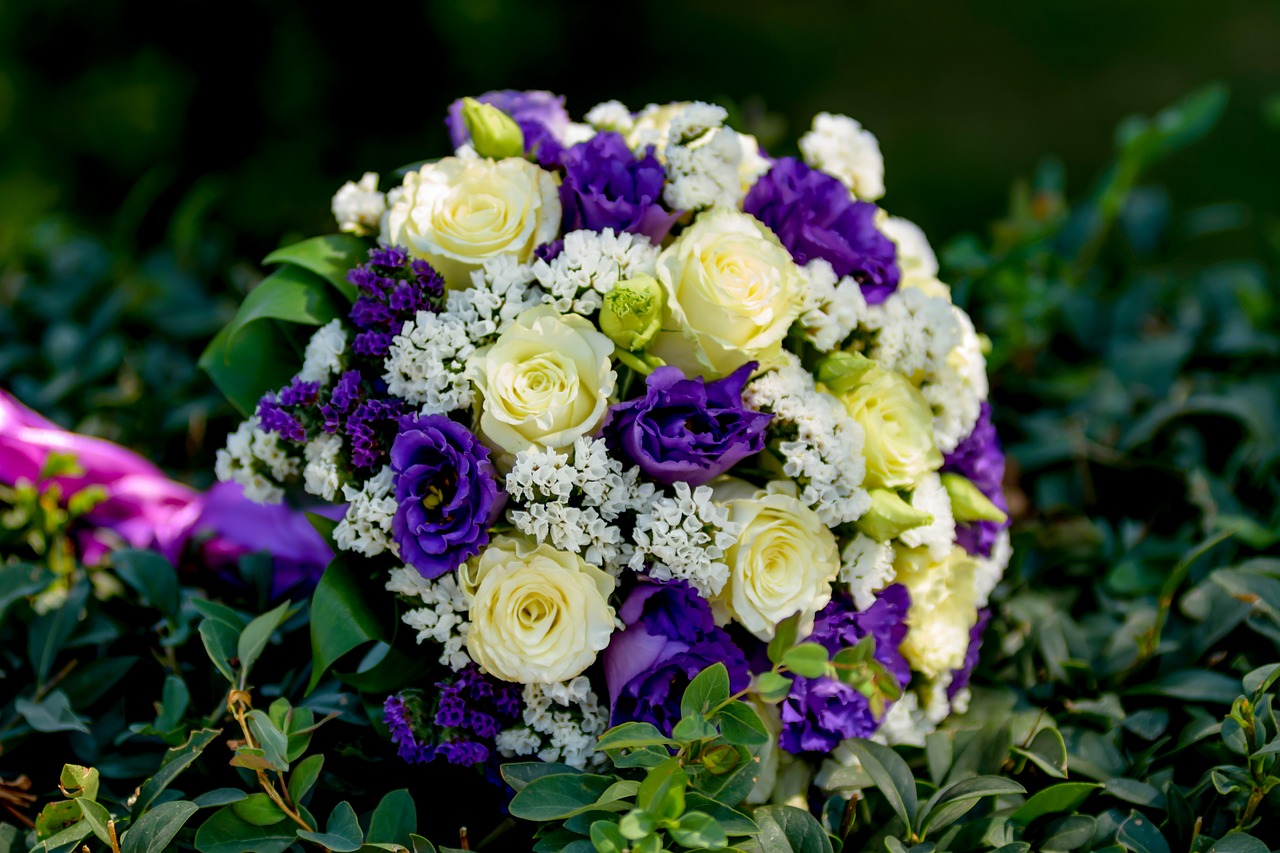
Creating a Balanced Bouquet
Creating a balanced bouquet is like composing a beautiful piece of music; each flower plays its part, contributing to a harmonious whole. When you think about a bouquet, it’s essential to consider not just the flowers themselves but also how they interact with one another. A balanced bouquet should feel stable and visually pleasing, drawing the eye without overwhelming it. So, how do you achieve this delicate balance? Let’s dive into some essential techniques!
First and foremost, choose a variety of flowers that differ in size, shape, and texture. This diversity adds interest and depth to your arrangement. For example, you might select large blooms like peonies or hydrangeas as focal points, while smaller flowers like daisies or baby’s breath can serve as fillers. Incorporating different textures, such as the smoothness of roses alongside the ruffled edges of tulips, can create a dynamic visual experience.
Next, consider the color scheme. A balanced bouquet often employs a cohesive color palette. You can achieve this by using complementary colors—those that are opposite each other on the color wheel, like blue and orange—or analogous colors, which are next to each other, such as blue, blue-green, and green. By mixing these colors thoughtfully, you can create a bouquet that feels both lively and unified.
Another crucial aspect is the arrangement technique. When placing your flowers, start with the larger blooms at the center or base of the bouquet. This provides a solid foundation. Gradually add smaller flowers around them, ensuring that the arrangement flows naturally. A common technique is the spiral method, where you hold the stems at an angle and layer the flowers in a circular motion. This not only helps in achieving balance but also creates an organic look that feels effortless.
To further enhance the stability of your bouquet, pay attention to the weight distribution. A well-balanced bouquet should feel comfortable in your hands, without tipping over to one side. You can test this by holding the bouquet at the stems and adjusting the flowers until it feels just right. If you find one side is heavier, simply redistribute some of the flowers until you achieve that perfect equilibrium.
Lastly, don’t forget about the finishing touches! Adding greenery or foliage can help to frame your bouquet and provide a backdrop that highlights the flowers. Think of it like a picture frame; it enhances the beauty of the artwork within. Use leaves or branches to create a lush, full look that complements the colors and shapes of your blooms.
In summary, creating a balanced bouquet involves:
- Choosing a variety of flowers with differing sizes and textures.
- Employing a cohesive color scheme.
- Utilizing effective arrangement techniques like the spiral method.
- Ensuring even weight distribution for stability.
- Incorporating greenery for added depth and framing.
By following these tips, you’ll be well on your way to crafting beautiful, balanced bouquets that not only impress but also bring joy to those who receive them. Remember, floral arrangement is both an art and a science, so don’t be afraid to experiment and let your creativity shine!
Q: How do I choose the right flowers for my bouquet?
A: Consider factors like seasonality, color palette, and the occasion. Mixing different flower types can also create a more interesting bouquet.
Q: What is the best way to keep my bouquet fresh?
A: Trim the stems at an angle, remove any leaves that will be submerged in water, and change the water every few days to keep your bouquet looking fresh for longer.
Q: Can I use artificial flowers in my bouquet?
A: Absolutely! Artificial flowers can be a great option for long-lasting arrangements, especially for events where you want to maintain a specific look over time.
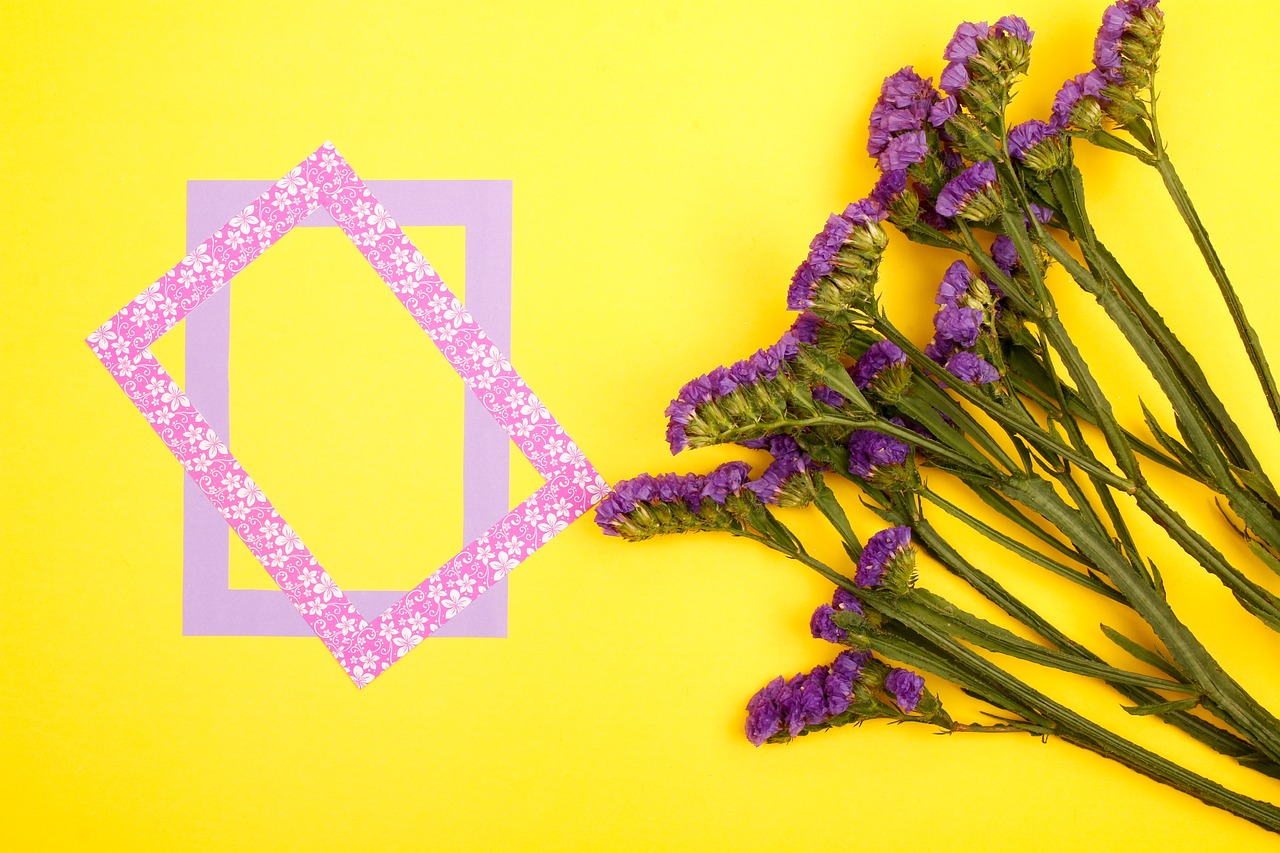
Designing Eye-Catching Centerpieces
When it comes to events, whether it’s a wedding, a birthday party, or a corporate gathering, the centerpiece is often the star of the show. It’s not just a decoration; it’s a conversation starter, an aesthetic focal point, and sometimes even a reflection of the theme of the event. So, how do you create a centerpiece that not only catches the eye but also captivates the heart? Let’s dive into some creative ideas and techniques that will help you design centerpieces that are truly unforgettable.
First and foremost, consider the theme of your event. The centerpiece should resonate with the overall vibe you’re aiming for. For instance, a rustic wedding might call for wildflowers in mason jars, while a formal gala could benefit from elegant floral arrangements in crystal vases. Think of your centerpiece as a storyteller—it should convey the mood and style of the occasion. This means paying attention to not just the flowers you choose, but also the containers and additional elements that accompany them.
Next up, let’s talk about height and scale. One of the most effective ways to create an eye-catching centerpiece is to play with varying heights. Imagine a table adorned with tall, dramatic arrangements paired with low, lush bouquets. This contrast creates visual interest and draws the eye across the table. Consider using a combination of different vase sizes, or even incorporating elements like candlesticks or branches that reach upward, adding dimension to your design.
Don’t forget about color! Color is a powerful tool in floral design. A well-thought-out color palette can evoke emotions and set the tone for your event. Use the principles of color theory to your advantage. Complementary colors can create vibrant contrasts, while analogous colors can produce a harmonious look. For example, if your event has a navy blue theme, consider using white and gold flowers to create a stunning contrast that pops. You can also use a color wheel as a guide to help you select the perfect flower combinations.
Another essential aspect to consider is texture. Mixing different textures can add depth and interest to your centerpiece. Combine soft blooms with spiky foliage, or pair delicate flowers with sturdy branches. This variety not only enhances the visual appeal but also makes the arrangement feel more dynamic. Think of it like creating a beautiful painting—different textures can add layers and intrigue, making your centerpiece a true work of art.
Finally, remember that less is sometimes more. A cluttered centerpiece can be overwhelming and detract from the overall beauty of your table setting. Instead, aim for simplicity and elegance. A single stunning arrangement in a beautiful vase can make a more significant impact than a crowded table filled with various decorations. Consider using negative space to your advantage, allowing your centerpiece to breathe and stand out.
To summarize, designing eye-catching centerpieces involves a thoughtful approach to theme, height, color, texture, and simplicity. By keeping these elements in mind, you can create stunning arrangements that not only enhance your event but also leave a lasting impression on your guests. Remember, your centerpiece is more than just a decoration; it’s an opportunity to express creativity and set the tone for a memorable experience.
- What flowers are best for centerpieces? Choosing flowers depends on your event theme and season. Popular choices include roses, peonies, and hydrangeas for their beauty and availability.
- How do I keep my centerpieces fresh during the event? To maintain freshness, cut stems at an angle, use clean water, and add flower food. Consider placing them in a cool area away from direct sunlight.
- Can I mix different types of flowers in one centerpiece? Absolutely! Mixing different flowers can create a more dynamic and visually appealing arrangement. Just be mindful of color and texture balance.
Frequently Asked Questions
- What are the basic principles of floral design?
Floral design principles include balance, contrast, harmony, and proportion. These elements work together to create visually appealing arrangements. Balance ensures that your arrangement feels stable, while contrast adds interest and draws the eye. Harmony ties everything together, creating a cohesive look, and proportion helps maintain the right size relationships between flowers and the overall arrangement.
- How do I choose the right flowers for my arrangement?
Selecting the right flowers involves considering seasonality, color palettes, and the types of flowers that suit your occasion. Seasonal flowers not only look fresher but also last longer. Think about the colors that complement each other and the message you want to convey through your arrangement. For instance, vibrant colors can evoke joy, while softer hues can create a calming effect.
- What is the importance of using seasonal flowers?
Using seasonal flowers is crucial because they are more vibrant and have a longer lifespan. They are often more affordable and environmentally friendly, as they don't require long-distance transportation. Plus, seasonal blooms can enhance the overall aesthetic of your arrangement, making it feel more connected to the time of year.
- Should I choose local or imported flowers?
Choosing between local and imported flowers depends on your priorities. Local flowers tend to be fresher, support local economies, and have a lower carbon footprint. However, imported flowers may offer a wider variety, especially for exotic blooms. Weighing the pros and cons can help you make a decision that aligns with your values and budget.
- How does color theory apply to floral arrangements?
Color theory is essential in floral design as it helps you create visually striking arrangements. Using complementary colors can create vibrant contrasts, while analogous colors offer a more harmonious look. Understanding how colors interact can elevate your designs, making them more engaging and impactful.
- What are the best practices for flower care and preparation?
Proper flower care involves cutting stems at an angle, removing leaves that will be submerged in water, and conditioning them in clean water with floral preservatives. Store them in a cool place away from direct sunlight to ensure they remain fresh and vibrant for as long as possible.
- What techniques can I use to create a balanced bouquet?
To create a balanced bouquet, start by selecting a variety of flowers in different shapes and sizes. Use a mix of focal flowers, filler flowers, and greenery. Begin by placing your focal flowers in the center, then add filler flowers around them, ensuring that the arrangement feels balanced from all angles.
- How can I design eye-catching centerpieces?
Designing eye-catching centerpieces requires creativity and attention to detail. Start with a theme or color scheme that matches your event. Use varying heights and textures to add dimension. Incorporate unique elements like candles or decorative containers to make your centerpiece stand out and become a focal point of the table.



















